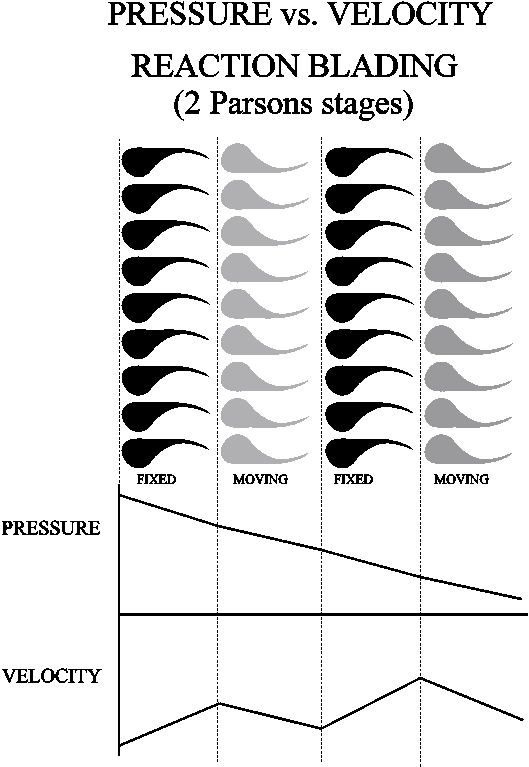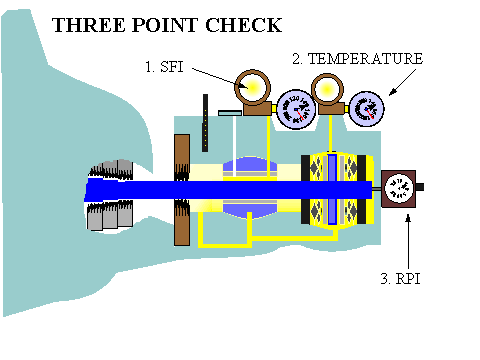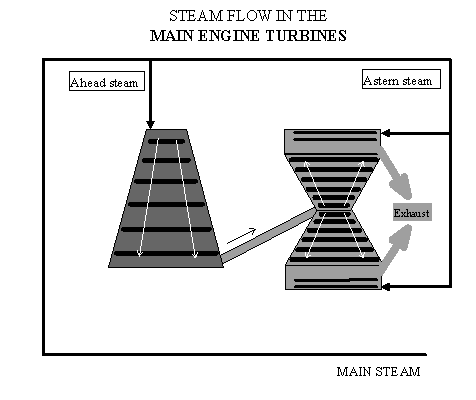 Engineering Training
Engineering Training Engineering Training
Engineering TrainingINFORMATION SHEET
MAIN ENGINE TURBINES
Information Sheet Number 62B-210
INTRODUCTION
The ship's main propulsion turbines are designed to efficiently convert the thermal energy of steam into useful mechanical energy to propel the ship through the water. As work is extracted from steam its pressure decreases. The high pressure turbine is designed to efficiently extract work out of the high pressure steam as it initially enters the main propulsion turbines. The low pressure turbine is designed to efficiently extract work out of steam which is exhausting out of the high pressure turbine at a lower pressure. In order to fully comprehend how this occurs, the student must grasp basic turbine construction and design. Once basic construction and design is understood, the conversion of thermal energy into mechanical energy will be more clearly understood.
REFERENCES
(a) Introduction to Naval Engineering ISBN 0-87021-320-2
(b) Principles of Naval Engineering NAVPERS 10788 Series
(c) NAVOSH Manual OPNAVINST 5100.19B VOL II
INFORMATION
Turbine Classification
In order to better understand turbine operation, five basic classifications are discussed. Type of compounding refers to the use of blading which causes a series of pressure drops, a series of velocity drops, or a combination of the two. Division of steam flow indicates whether the steam flows in just one direction or if it flows in more than one direction. Type of steam flow describes the flow of steam in relation to the axis of the rotor. Exhausting condition is determined by whether the turbine exhausts into its own condenser or whether it exhausts into another piping system. Type of blading identifies the blading as either impulse blading or reaction blading.
High Pressure Turbine

Figure 1
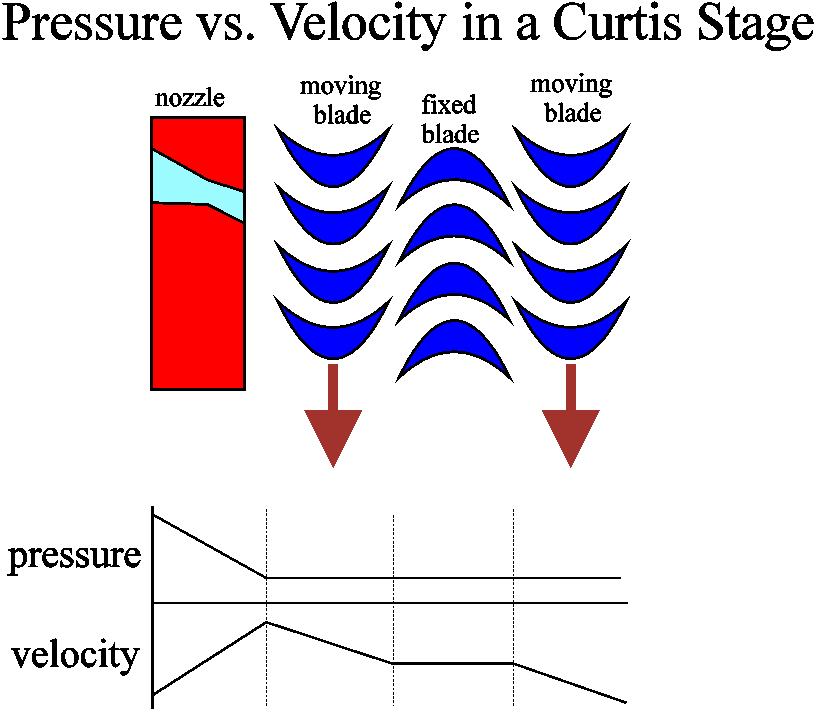
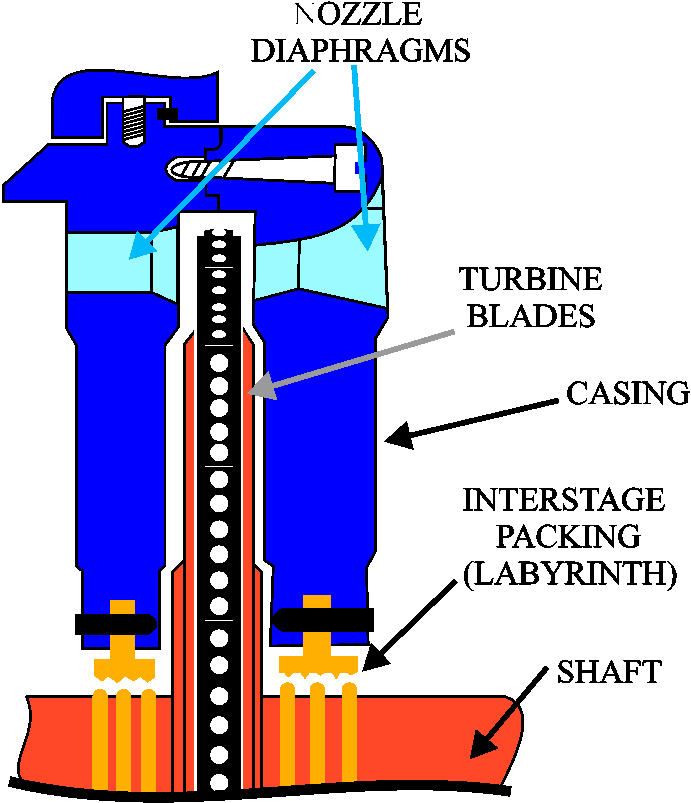
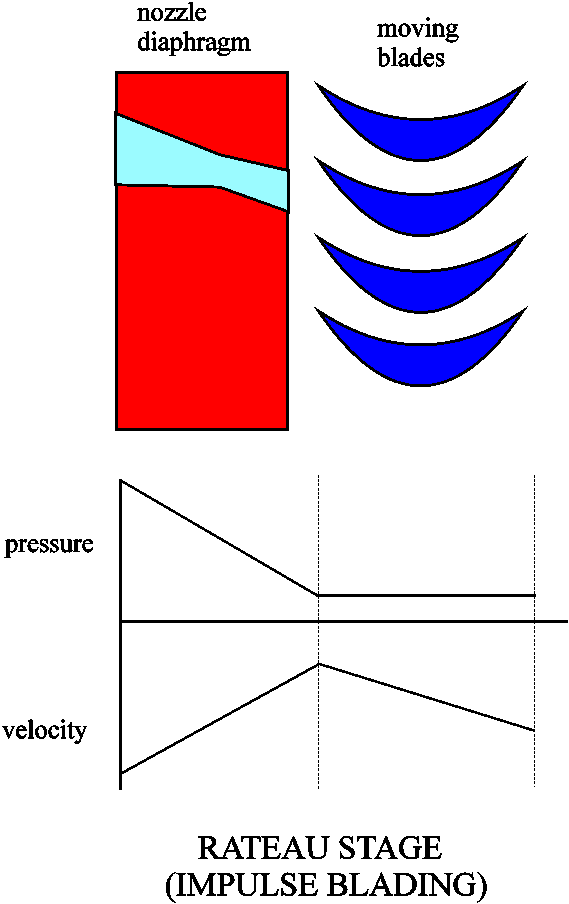
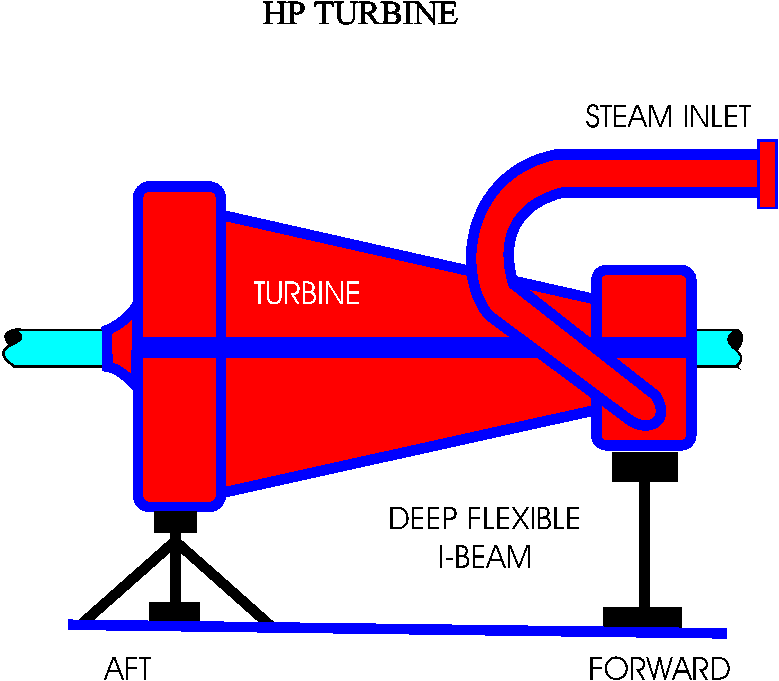
Figure 5
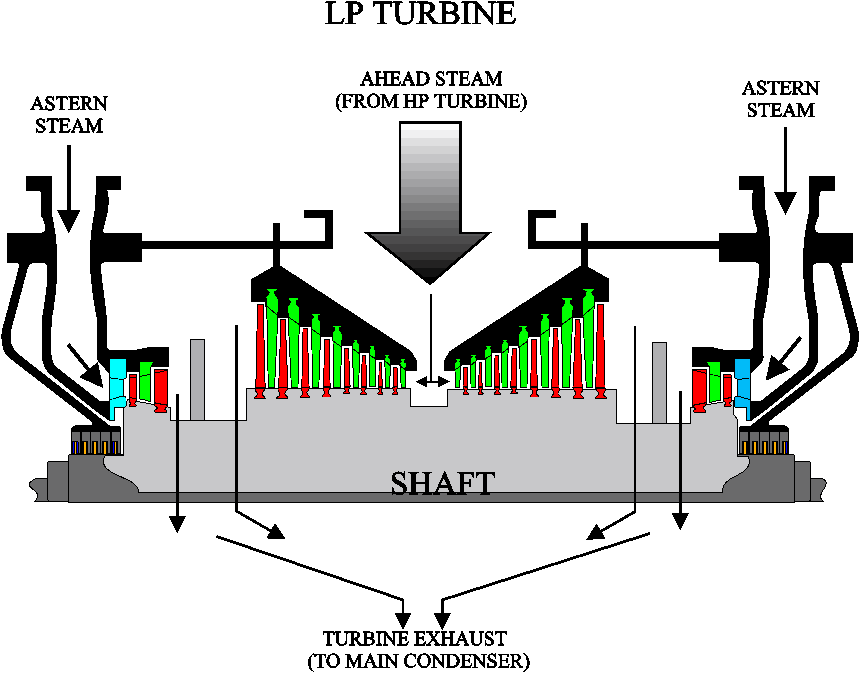
Figure 6
